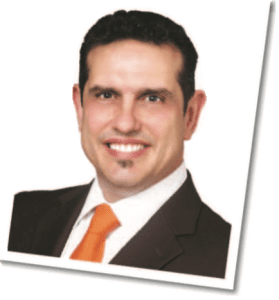|
Getting your Trinity Audio player ready...
|

In the last 15 years Regenerative Medicine (RM) has emerged as a major player in the medical community and among people throughout the community who have personally witnessed how RM relieves symptoms in either themselves or their loved ones that are associated with a variety of diseases or medical problems – primarily degenerative or inflammatory in nature.
As a pioneer and specialist in RM, I had the honor and privilege to make use of the oldest and first tool utilized in Regenerative Medicine 15 years ago. Called PRP or Plasma Rich Platelets, it is currently a very popular treatment in non-surgical orthopedics for the treatment of tendon and meniscal ruptures in the shoulder and knees; herniated disc in the cervical or lumbar spine; peripheral nerve damages; arthritis and arthrosis of knees, shoulders, spine, hips, and ankles. PRP is also widely used in dentistry (tooth implants), cosmetic (acne, facial resurfacing), and pain management among other uses.
PRP consists of a concentration of platelets and plasma derived from the patient’s own blood when the red blood cells are discarded. Therapeutically the concentrations and later activation of platelets produce a cocktail of molecules called Grow Factors (GF) that ultimate make important changes to stimulate the production of collagen, new vessels and better blood supply, oxygen, and nutrients to the tissue. It also stimulates growth of tissues and suppresses the inflammatory common denominator for many.
Where PRP Currently Stands
More than 15 years have passed since I first used PRP – and I still rely on it to this very day due to his advantages in providing healing in mild cases of tendon ruptures, osteoarthritis of knee, hips, and shoulders. I have also I found a great use in spine disc ruptures, bulging, pinched nerves, and arthritis of the neck or lumbar spine. The results had been nothing short of amazing.
Unfortunately, PRP effectivity depends on two variables: the quality of preparation or good manufacturing product (GMP) and the age of the patient.
Many clinics use the “plasma” discarding the “platelets” or the quality of their equipment cannot produce a sustainable volume of platelets to be therapeutic. In either case the number of platelets in the blood is inadequate or the amount of blood collected from the patient is not sufficient to acquire a desirable therapeutic level of GF.
Sadly, elder patients over 80 have poor functionality of their platelets and therefore cannot secrete the amount of GF needed to be therapeutic. Sometimes when two or more such variables are present, the efficacy of the treatment is greatly diminished.
Consider the Dos and Don’ts
There are many dos and don’ts in the application of any therapeutic treatment, PRP included. One thing that we definitely do at USA STEMCELL is use only “FDA-approved equipment” in obtaining and using PRP in a patient. Although this practice is often overlooked by many clinics and HMOs, it is legally required. So don’t be fooled – because this rule has never been enforced it doesn’t mean that one day the FDA will step up to enforce it.
Rest assured that my institute, USA STEMCELL, weighs all variables when employing this amazing treatment for its patients, including the strict use of FDA-approved equipment. In addition to the many years of experience and success we have had with PRP therapy, this is just one of many reasons why USA STEMCELL remains one of South Florida’s preeminent practices specializing in Regenerative Medicine.
For information, call 305-250-2355. Follow Dr. Ramon Castellanos on Facebook @usastemcell and via Instagram @usastemcell






